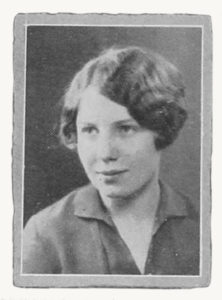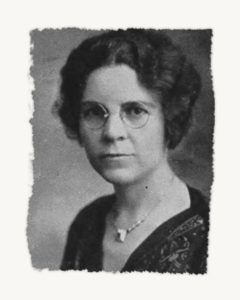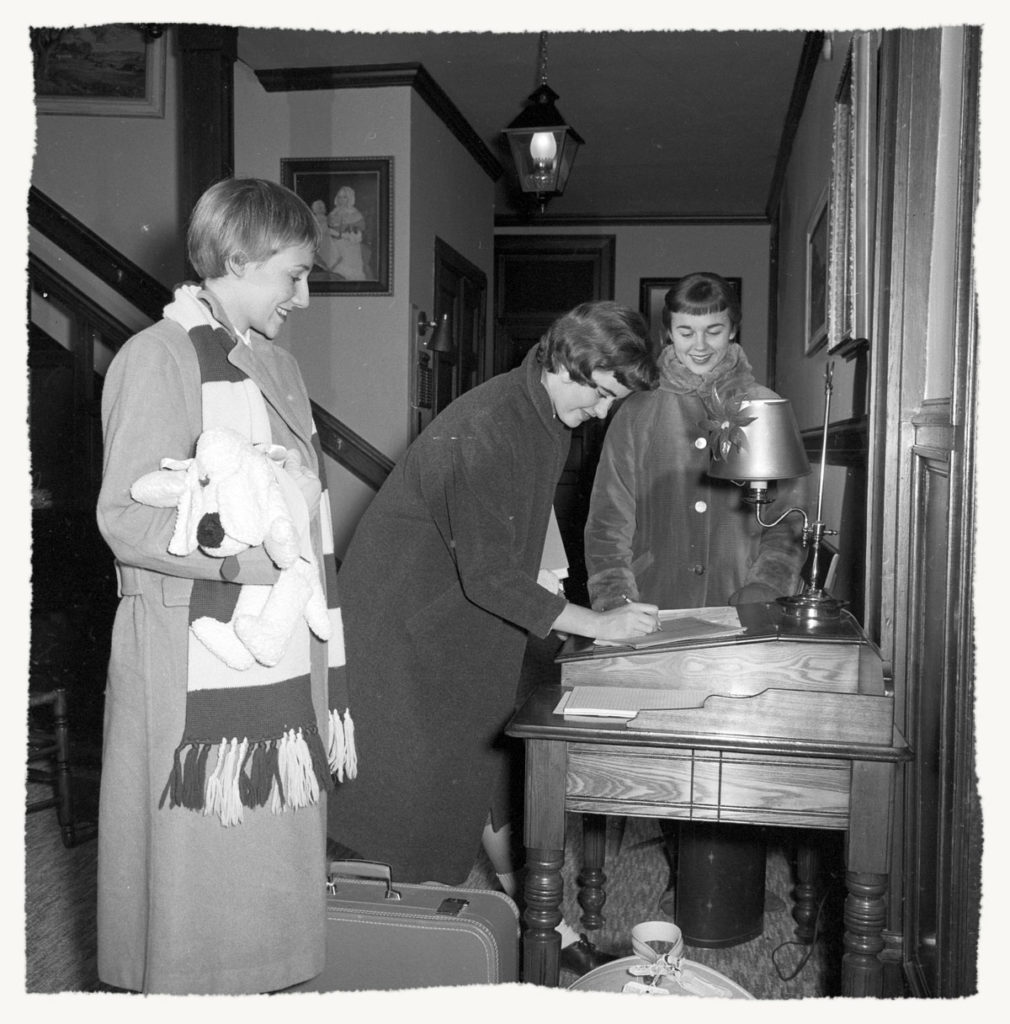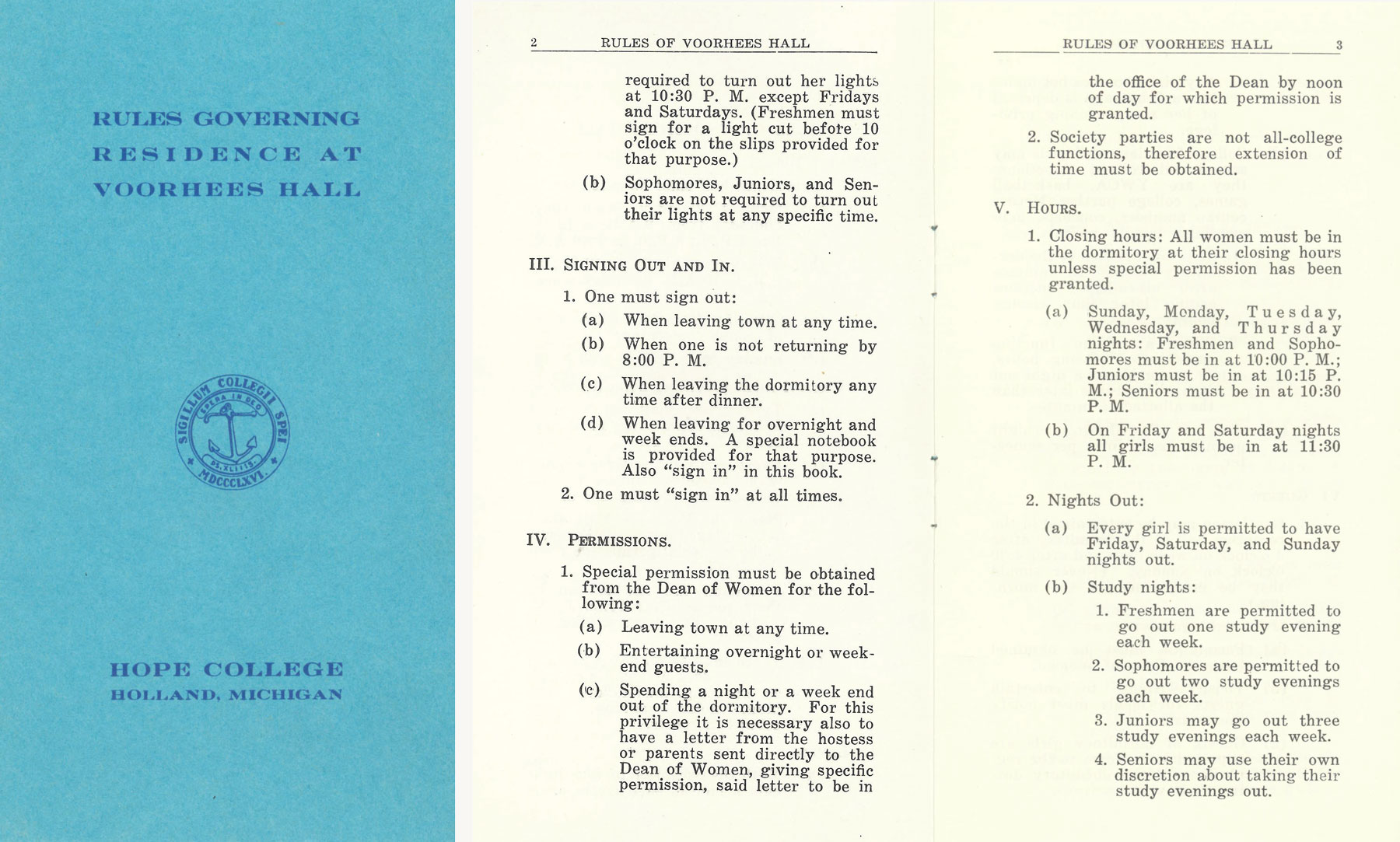Research Close to Home
Sometimes a research topic comes from something a researcher is passionate about. Sometimes it stems from a pressing societal issue. Other times, it’s a small detail in ongoing research that stands out and leads to new questions.
The latter is what led Dr. Lauren Hinkle ’04 Janes of the history faculty and students Grace Pettinger, Maria Seidl and Brooke Carbaugh to embark on a summer-long project to uncover the truth about the lives of the women at Hope College in the 1930s and 1940s.
It’s a project about women of Hope by women of Hope, which began when Seidl, a senior from White Lake, Michigan, was working on a project for the Joint Archives of Holland and noticed that the Anchor, the student newspaper, was contrastingly female-focused during the 1940s. It led her to wonder what Hope College looked like for women when men left for World War II.
She brought up the subject to Janes, associate professor of history, as an idea for summer research, and the project became possible through the generous support of the John H. Dryfhout ’64 Research Grant.
“Faculty-student collaborative research at Hope takes a lot of different forms,” Janes said. “This project was very much student-driven… so it was really fun and liberating for me to have them take the lead and just be there for support, and provide some editing and guidance.”
The end product of their research would be dependent on what material was in the archives, so they began with a broader question: “How did World War II and the changes in student population change women’s way of life at Hope?”
As they began looking through enrollment records, sorority scrapbooks, presidents’ files, Anchor editions, meeting minutes and more, their question began to expand, driving their research to also look at how the Great Depression impacted women in the Hope community, and the contrast to the effects of WWII.
Pettinger was surprised by the way the students banded together and relied on community to get through the major economic crisis.
“We really saw the ways it affected a lot of the culture of Hope College. You saw a lot of sororities growing during the Great Depression, and women emphasizing the importance of friends, family and community,” explained the senior from Mount Vernon, Iowa.
Sorority life proved to be an essential part of many women’s lives at Hope, with 75-80% of women belonging to a sorority in 1937. As noted in their findings, “Hope sororities struggled financially through the Depression, however, their popularity only increased,” with many of those sororities still in existence today.

Women proceeded to dominate campus during WWII, presenting an opportunity for more women to step into faculty roles and create opportunities for women at the college. However, the balance between education and family remained a controversial topic, and push back from the administration remained prevalent.
While the group was surprised to find that a good portion of women majored in STEM, Carbaugh found that most of the women faculty were not STEM members, with most of them dedicating their studies to the music and language departments. Not only that, but many women who majored in STEM went on to be missionaries.

“She kind of became our rallying cry,” Seidl said. “She was just really fascinating because she clearly loved her job and her students.”
Carbaugh, a junior from Orbisonia, Pennsylvania, became invested in the story of Metta Ross, who spent 34 years at Hope as an instructor in the history and English departments, but experienced push back when seeking a role as the chair of the history department for not having a Ph.D.
A sense of empathy and connection emerged as they embarked on the various women’s stories through correspondence, scrapbooks and personal collections. They also began to see parallels between experiences then and their own.

Carbaugh recalls reading the various accounts on the day Pearl Harbor was attacked – what people felt and vividly remembered doing – and how it resonated with the world today.
“I just clearly remember when we got sent home for COVID and how everything changed,” Carbaugh said. “I felt I could relate to them. Although they were off to war and we were just sent home… it’s a different situation, but a similar emotion.”

“They were going through two crises, and we’re going through a crisis… It almost felt like they were guiding us as we went through all the changes that COVID brought… they got through it, and we can, too,” Seidl echoed.
Voorhees Hall, the designated residence hall for women at the time, had a Book of House Rules, and the team found themselves envisioning what it would look like to adhere to the rules, like when they could go out or how many calls they had for the week. The annotations from the residents were the best part, like when they’d highlight rules that they had not broken or playfully note the ones where they’d push the limits.
“They had just as much personality as we do,” Seidl said. “Sometimes when we think about people in the past, we think of their accomplishments or tragedies, and we forget about the little things and day-to-day interactions… what really defined them.”
It was also during this time that the dean of women position came about, which many female faculty held. They lived in Voorhees Hall and had a similar role to that of a resident director today. Janes notes that the existence of the role reflected how relatively few female students there were on campus.
While the research led to a better understanding of what Hope College and the lives of female students and faculty looked like during that time period, the team acknowledges the limitations in the scope of their research. What was captured in the publications and other anecdotes of the time does not reflect everyone’s experience at Hope, especially those with marginalized identities.
Geoffrey Reynolds, the Mary Riepma Ross Director of the Joint Archives of Holland, worked alongside the group and commended their work ethic and diligence in uncovering 30 years of Hope’s history that had not been previously highlighted.
“Their work proved that women played a much bigger, prominent role while enduring a lot of pushback from the male-dominated administration and alumni at that point,” Reynolds said.
Reflecting on the 50th Anniversary of Title IX this year and its correlation with their research, the women celebrated the opportunities it has created for women while also noting areas of improvement and how some of the struggles women saw then are still present today.
“The women within our project wouldn’t even imagine some of the different opportunities that we have,” Pettinger said. “Look at the amount of life paths we have an opportunity for, and the culture that we’ve grown up in where there isn’t just one set path for you is something that Title IX was really influential in establishing.”
The overall progress is there, as highlighted by their work — an ode to the early women of Hope who built the foundation for women today to not only thrive, but build upon.
The team published their research and findings through an interactive website, “Women at Hope College in the 1930s and 1940s.” They also presented their work at the Holland Museum as part of Women’s History Month on March 10 and during the April 4-8 National Conference on Undergraduate Research.


One thought on “Research Close to Home”
Comments are closed.